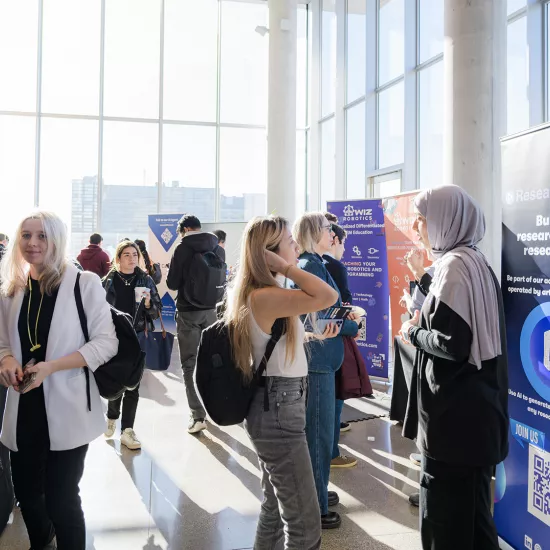On thin ice: UTM climate scientist says more action needed by governments to fight climate change

When Kent Moore makes a new discovery about climate change’s impact on the Earth, he has mixed emotions.
On the one hand, it’s exciting. On the other, it’s sad.

As the 2021 United Nations Climate Change Conference (COP26) comes to a close this week, Moore is also experiencing more feelings: some frustration and a bit of déjà vu.
“Countries have committed to certain levels at COP26, but the problem is, we’ve never been able to meet any of our commitments,” he says. “It’s a challenge. I don’t think it’s going to be easy to meet these targets, but if we don’t . . . our children and grandchildren will have to deal with the consequences of our actions and that’s what really saddens me.”
He says through his research, he is already seeing evidence of climate change and its impact on the Earth.
For instance, in May 2020, Moore and his team discovered a polynya – a large area of open water that is essentially a hole in the Arctic sea ice – north of Ellesmere Island in a region known as the Last Ice Area. This area contains the oldest and thickest ice in the Arctic.
Moore says the hole is likely related to climate change.
“When we study the Arctic sea ice we focus on the area of ice, which is decreasing – but what we don’t focus on is that it’s also getting thinner,” he says.
He and fellow researchers believe that this ice thinned due to climate change, which caused the hole to appear.
By about 2050, Moore says most of the ice in the Arctic will be lost in the summer and the Last Ice Area will act as a refuge for plants and animals that need ice to survive, including algae and polar bears.
“This Last Ice Area will be the last area where these ecosystems will be able to survive, and we’re hoping this ice will persist through a period of time until we get our CO2 emission under control,” Moore says.
Global warming
Moore says the planet has already increased one degree Celsius compared with 150 years ago, which is causing many of the problems we see today, including wildfires, droughts and heatwaves. It is also affecting traditional ways of life for Inuit in the North.
“Everything we’re experiencing now, we will experience in the future – and it will be even worse than that because we aren’t taking any heat out of the system now,” he says.
Climate targets set out at COP26 will make it hard to keep within the global average surface temperature increase of 1.5 C, says Moore. And if the temperature increase jumps just half a degree to 2 C, it will have devastating consequences.
“At 1.5 C, if we jump forward to the end of the century, there still will be some summers where there is ice in the Arctic. At 2 C, there won’t be any. It will be ice-free during the summer,” Moore explains. “We hear a lot about stresses on coral reefs, which are complex ecosystems, at 1.5 C, but the corals will survive. They’ll be under a lot of pressure, but they’ll survive. At 2 C, they probably won’t.”
He adds that the difference in half a degree will also impact people. About 14 per cent of the world’s population will experience extreme heat in the summer at 1.5 C increase. That number jumps to roughly 37 per cent of the population at 2 C.
Moore says that while individual citizens are trying to do their part by driving electric cars and using less plastic, it’s up to governments to start making more significant changes. That could include finding smarter ways to make concrete, which is a massive producer of greenhouse gases, and reduce emissions in our production of fossil fuels.
However, he thinks governments are trying to make commitments that are the least impactful on the economy.
“I think they understand that if they really move on this file, they’ll suffer a lot of political heat and they won’t get much benefit from it because the benefits will be accrued in 20 to 30 years,” he says. “I don’t think there’s the political will to do it.”
He says he commends young climate activists who are working to make a difference.
“They’re the ones that understand that it’s going to be them that’s going to clean up this mess. They’re really frustrated, and I totally understand their frustration. I feel it too,” Moore says. “These [climate] changes really are significant, and they’re going to be impacting the Earth for a long, long time.”
Read more:
- Ice arches holding back Arctic's ‘Last Ice Area’ might soon let go, UTM research shows
- Arctic’s last refuge is disappearing as region continues to warm
- Wind, sea ice changes suggest climate change in western Arctic, says UTM researcher



